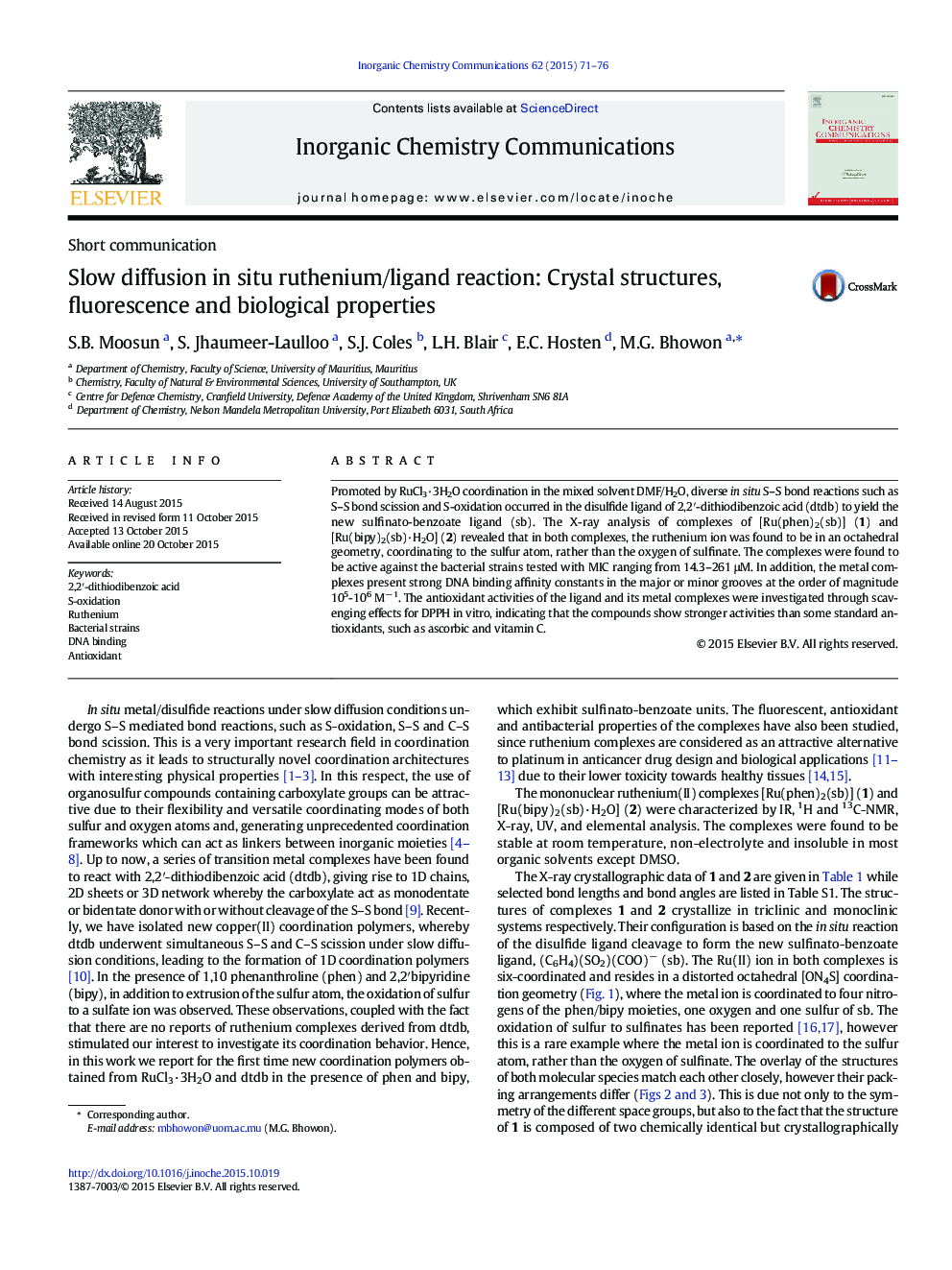| کد مقاله | کد نشریه | سال انتشار | مقاله انگلیسی | نسخه تمام متن |
|---|---|---|---|---|
| 1301313 | 1498928 | 2015 | 6 صفحه PDF | دانلود رایگان |
• Two ruthenium complexes were prepared from metal–ligand in situ reaction.
• The S–S bond in dithiobenzoic acid underwent cleavage followed by subsequent oxidation.
• The metal–ligand charge transfer (MLCT) transitions are luminescent at ambient temperature.
• Complexes showed interesting antibacterial, antioxidant and DNA binding properties.
Promoted by RuCl3·3H2O coordination in the mixed solvent DMF/H2O, diverse in situ S–S bond reactions such as S–S bond scission and S-oxidation occurred in the disulfide ligand of 2,2′-dithiodibenzoic acid (dtdb) to yield the new sulfinato-benzoate ligand (sb). The X-ray analysis of complexes of [Ru(phen)2(sb)] (1) and [Ru(bipy)2(sb)·H2O] (2) revealed that in both complexes, the ruthenium ion was found to be in an octahedral geometry, coordinating to the sulfur atom, rather than the oxygen of sulfinate. The complexes were found to be active against the bacterial strains tested with MIC ranging from 14.3–261 μM. In addition, the metal complexes present strong DNA binding affinity constants in the major or minor grooves at the order of magnitude 105-106 M− 1. The antioxidant activities of the ligand and its metal complexes were investigated through scavenging effects for DPPH in vitro, indicating that the compounds show stronger activities than some standard antioxidants, such as ascorbic and vitamin C.
The reaction of 2,2′-dithiodibenzoic acid with RuCl3·3H2O in the presence of 1,10-phenanthroline and 2,2′-bipyridine under slow diffusion conditions led to the formation of an in situ generated sulfinato-benzoate ligand, prior to coordination with Ru. Both mononuclear complexes were in an octahedral environment, surrounded by carboxylate oxygens, sulfur atoms and nitrogen atoms of N-donor ligands. The biological and fluorescent properties of the compounds were evaluated.Figure optionsDownload as PowerPoint slide
Journal: Inorganic Chemistry Communications - Volume 62, December 2015, Pages 71–76
